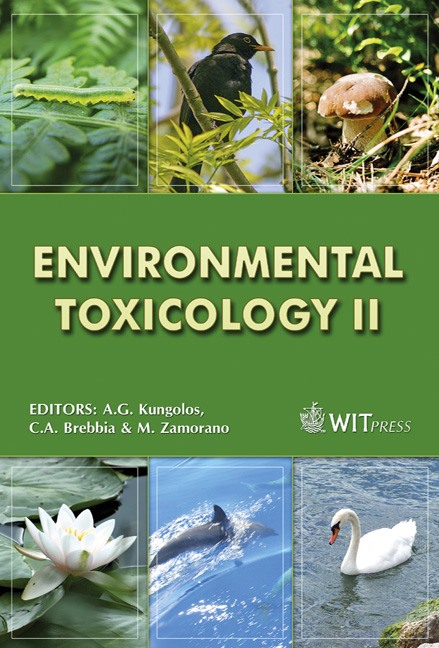Reducing Copper Toxicity By Drinking Coffee
Price
Free (open access)
Transaction
Volume
110
Pages
9
Page Range
199 - 207
Published
2008
Size
392 kb
Paper DOI
10.2495/ETOX080211
Copyright
WIT Press
Author(s)
H. Djati Utomo
Abstract
Copper contamination in drinking water is not a new issue in today’s world. Various modern industries use copper for their raw materials and discharge copper by-products into the watercourse. Current water treatment technology is not a guarantee for providing safe drinking water required by humans. Although copper is one of the essential nutrients required by the human body for both physical and mental health, an excessive copper concentration in the human body becomes a toxic threat. Drinking coffee habitually may be helpful in reducing copper concentrations, which might lead to a reduction in copper toxicity. This experimental study, using copper-ion selective electrode (Cu-ISE), lowered copper concentrations due to the availability of copper binding ligands found in coffee solution. The copper electrodes were calibrated thoroughly using ethylenediamine (en) standard buffer solution before being used for determining free and bound copper ions in coffee solution. Keywords: copper, Cu-ISE, coffee, copper binding ligands, en, toxicity. 1 Introduction Water pollution due to toxic heavy metals contamination is a major issue for today’s environment. Various trace metals such as lead, mercury, zinc, copper, nickel and cadmium are released to the environment as a result of human activities. Modern uses of these metals include the production of alloys, photography, paints and dyes, pesticides (e.g. copper oxychloride), textiles, electrical wiring and electroplating. Judd et al. [1] estimated that the production of printed wiring board (PWB) produced about 60% of the soluble metals disposed of into wastewaters. Copper is extremely toxic to aquatic biota exhibiting an adverse impact at concentrations as low as 15 to 30 nmol L-1 (Davey et al. [2], Gillespie and Vaccaro [3]) Concerns about trace metals
Keywords
copper, Cu-ISE, coffee, copper binding ligands, en, toxicity.





